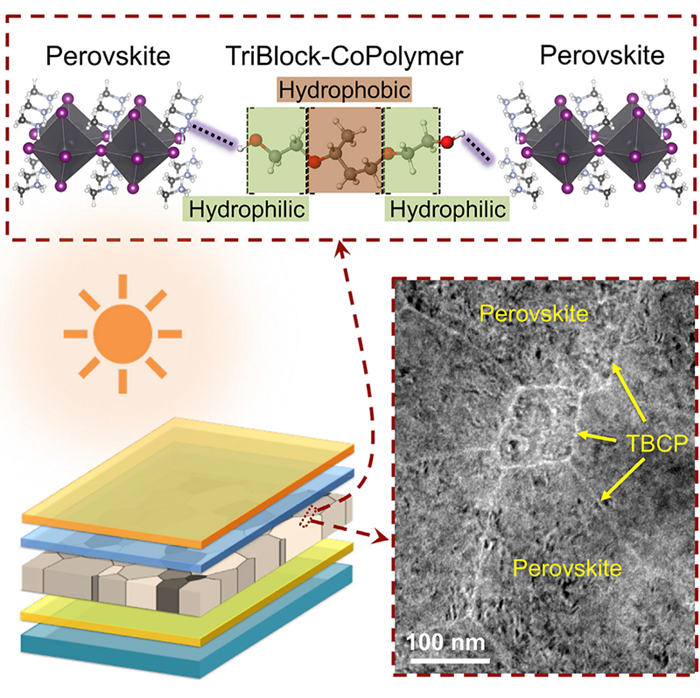For the past few years, the rise of the photovoltaic industry is inseparable from various new types of solar cells. Organic-inorganic halide perovskites are a family of crystalline semiconducting materials that are revolutionizing the field of photovoltaics. The two major factors that restrict its large-scale commercial application are the power conversion efficiency and the environmental (moisture, thermal and light) stability of the devices. The grain boundary chemistry plays a key role in achieving efficient stable perovskite solar cells. Grain boundaries can become easy highways for diffusion of atomic, ionic, and molecular species (moisture and gas or solvent molecules).
Recently, a research, leaded by Prof. PADTURE Nitin P. (Brown University, USA), Prof. ZHOU Yuanyuan (Brown University, USA) and Prof. PANG Shuping (Qingdao Institute of Bioenergy and Bioprocess Technology, Chinese Academy of Sciences, China) demonstrated the continuous chemical functionalization of grain boundaries in perovskite thin films by using a tri-block copolymer that exhibits both hydrophilicity and hydrophobicity. The related work was published in Chem.
It is found that simple addition of the tri-block copolymer into the precursor solution assists the perovskite solution crystallization, leading to the formation of an unprecedentedly smooth thin film with grain boundary regions that are confocally functionalized. Precise tuning of the thickness of the functionalized grain boundary is demonstrated, leading to perovskite thin films with simultaneously enhanced optoelectronic properties and environmental (thermal/moisture/light) stability. PSCs via this new strategy show high efficiency up to 19.6% that retains 92% after 480-h continuous one-sun illumination.
The concept of continuous grain boundary functionalization is generic, and it is applicable to a broad range of perovskite or other polycrystalline materials, representing a new direction in the development of high-performance perovskite solar cells and other optoelectronic devices.
This study is supported by the Office of Naval Research (No. N00014-17-1-2232), the National Science Foundation (No. OIA-1538893), the National Natural Science Foundation of China (No. 51672290), the CAS Youth Innovation Promotion Association (No. 2015167), the National Science Foundation (Nos. DMR-1420645 and OIA-1538893).

Figure: Schematic illustration and top surface SEM image of the thin-film structure of MAPbI3 OIHP with nanoscale TBCP phase continuously functionalization the GBs, forming GB “walls” (Image by ZHOU Yuanyuan)
(Text by LI Zhipeng and PANG Shuping)

